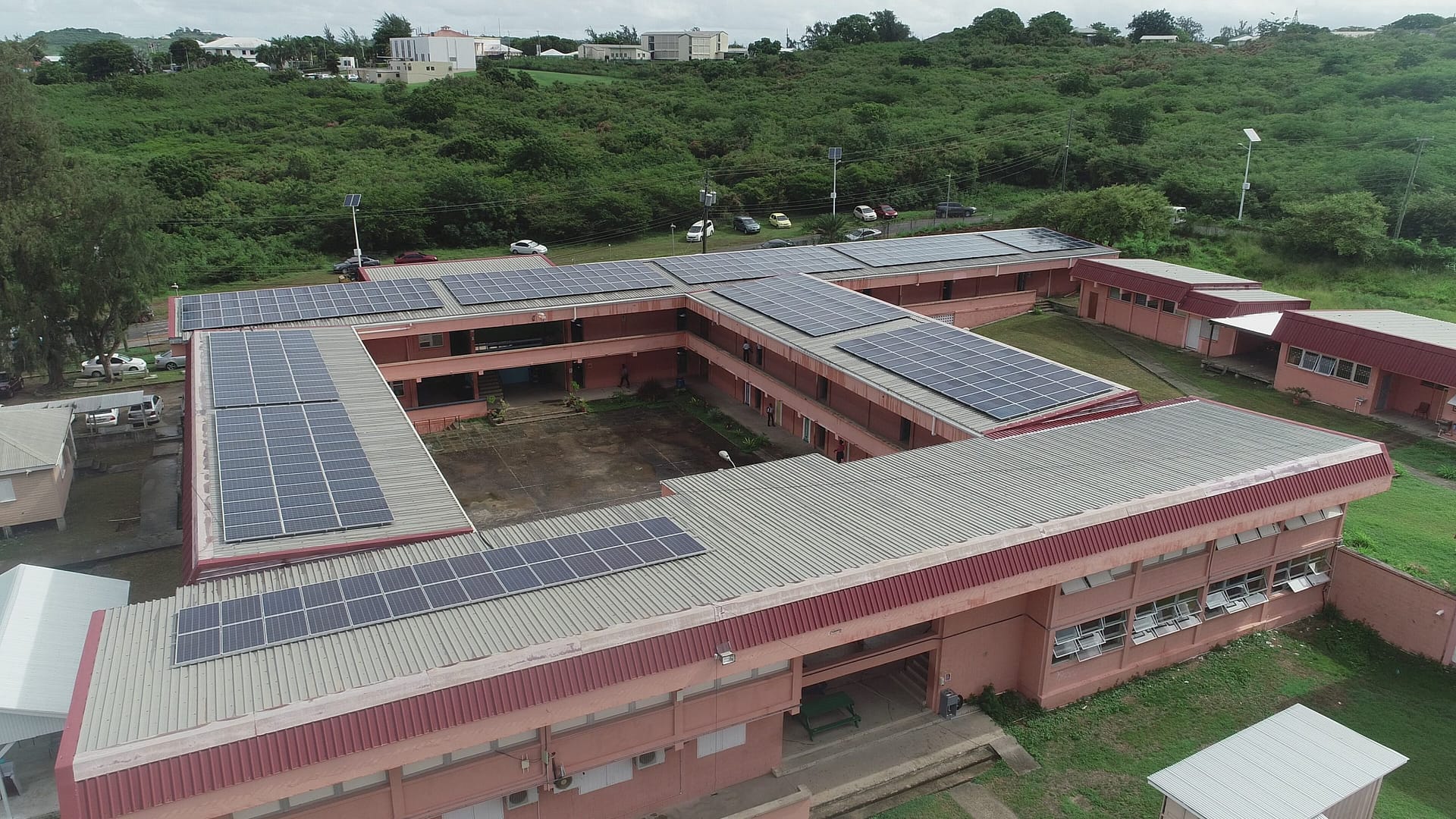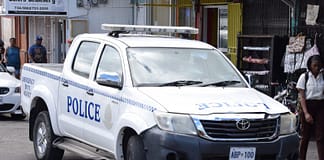
With the Caribbean-island state of Antigua and Barbuda having committed to achieving an entirely renewable energy system by 2030, as part of a path to a net-zero carbon economy by mid century, a study prepared by the International Renewable Energy Agency (IRENA) has placed solar front and center of the energy transition needed.
Government plans to add a modest 5 MW of rooftop PV generation capacity to the current 2 MW of residential systems and 7 MW of ground-mounted solar projects would see the country fall far short of that goal.
Instead, IRENA has proposed reaching 199 MW of solar capacity in a near-90% clean energy system featuring 57% solar generation, and in which diesel makes up just 8%, down from its current 96%. Such a transformation would require upfront public investment of $388 million, IRENA calculated, and the government could then consider green hydrogen production to attain the final 10% of a fully renewable energy system, before rolling out electric vehicles (EVs) across the transport network by 2040.
Scenarios
The IRENA study modeled five future energy scenarios: an ‘optimal’ system featuring modest residual diesel supply; optimal-plus-EVs; all-renewable energy mixes both with and without green hydrogen; and another all-clean-power system featuring green hydrogen and EVs.
The volume of solar capacity required on the two islands under the various scenarios ranged from 199 MW for the two ‘optimal’ mixes up to 372 MW for the 100% renewable, non-green-hydrogen set-up, which would lean on solar for the highest proportion of its electricity generation, at 61%.
With the nation at present spending around 10% of its GDP on diesel imports, IRENA estimated the savings offered by its optimal scenario would run to $29.3 million per year. Crucially, the current electricity cost of $0.15/kWh in Antigua and Barbuda could be reduced to $0.105/kWh under such a generation mix, with a low of $0.09/kWh possible under the most capital intensive, all-clean-energy-plus-hydrogen-and-EVs approach.
For residents on Barbuda, who lost their energy infrastructure with the landing of Hurricane Irma in September 2017, IRENA has built upon the power mix suggested by UAE state-owned Abu Dhabi Future Energy Company in 2018. That report posited rebuilding the energy system with 719 kWp of solar capacity, 862 kWh of lithium-ion energy storage and 660 kW of generation from two diesel plants. IRENA has instead proposed 2.07 MW of solar and 4.6 MWh of storage to attain almost 95% clean power for the island, and suggested biodiesel could offer a route to 100% renewables.
IRENA said its system would see the $0.48/kWh electricity price on Barbuda fall to $0.16.
To attain its clean power ambitions, though, the authorities should improve renewables capacity procurement, train a domestic workforce for operations and maintenance and introduce electricity time-of-use tariffs to help drive the adoption of residential storage systems.
With the IRENA plan in part resting on an assumption every one of the nation’s 30,000 households would be fitted with solar and storage–to supply 90 MW of the hoped-for generation capacity–the latter two options would appear to have paramount importance.
Advertise with the mоѕt vіѕіtеd nеwѕ ѕіtе іn Antigua!
We offer fully customizable and flexible digital marketing packages.
Contact us at [email protected]

















Thank you for the consulting proposal International Renewable Energy Agency, Abu Dhabi ( where I seem to remember A&B has a CIP office?). Maybe the UAE will offer a USD 400m loan to facilitate their proposal? Be sure to add $$$ though as there are a few factors that maybe were not taken into consideration;
1. Antigua’s inability to maintain plant in proper working order on a consistent, reliable basis nor maintain sufficient replacement part inventory therefore resulting in power & water outages and dark streetlamps for as long as I can remember.
2. CITIZENS: the financial inability of majority of citizens & residents to invest in solar technology, equipment & maintenance of same
3. MISTRUST of power generated ‘on your home’ being sent to national grid and you then being metered for your power usage and receiving that as a no-pay CREDIT on your power bill.
4. COST of purchasing Electric Vehicles in A&B as replacements to existing fossil fuel vehicles.
5. CHARGING POINTS will need to be installed in every home, multiple points in some homes – BUT, If energy supply from main grid is as patchy as it is currently, some days, some cars would not be able to move! The economic knock-on effect of that is potentially damaging as we try to pull out from a pandemic ravaged economy
Who pays for the charging of buses/ taxi’s etc. while on hotel or the air/sea port stands?
6. BILL REDUCTION: None of us truly believe the APUA, an arm of government, will reduce our power bills in a meaningful manner, as government needs the revenue…so we may see a kwh cost decrease & removal of oil fluctuation charge, but additional ‘revenue recovery charge’ or some such ting will more than likely be added
7. PERSONAL ‘SWEETENERS’ how will a certain Knight, ministers & big-ups mek out if the monthly fossil fuel and related equipment expenses stop? Their ‘enrichment’ with clean energy really only affords contract award & installation ‘opportunities’, then what?!
A word to the wise, remember the compact florescent & LED bulb initiatives? The cost of replacement bulbs is high for many households, and what % reduction in the monthly bill did the consumer feel in their pocket?
I’m a big believer in solar, hydro, geo-thermal & recapture power and would love to see it’s wide adoption – however, plans must be realistic for our islands and sustainable – not a quick $$$ project opportunity.
It is high time that the people of this twin island state take Gaston Alphonsus Browne, Prime Minister, and the Government to court. Here are two reasons why.
PM Browne said that he was using the state of emergency to “take away the rights” of the people of Antigua and Barbuda. This is unlawful and inhumane and should not be allowed to continue.
Lennox Weston, Junior Minister of Finance, is on record saying that the government of Antigua and Barbuda had put away half a billion dollars to take care of the coronavirus pandemic. To date, there is no acknowledgement of this money being used to meet the needs of the people of Antigua and Barbuda during this coronavirus crisis.
CHARGES TO ANSWER :
1. Prime Minister Browne has wronged the people by taking away their rights using a state of emergency.
2. Where is the $500m that was set aside placed, and if it exists, why is it not being used to take care of the needs of the people during the crisis?
I agree with you. All they have done is pocketed our country’s funds into their bank accounts and take money under the table while selling our lands out from under us for pennies.
They are worse than the common thief.
Where are the killers of Nigel Christian and Andrea Hughes?
Where are the killers of Nigel Christian and Andrea Hughes?
Where are the killers of Nigel Christian and Andrea Hughes?
Where are the killers of Nigel Christian and Andrea Hughes?
Where is the petition for this for this accusation so the people of the twin Island state can here by sign and submit our concerns.. TIME TO PROTEST !!!!
Comments are closed.